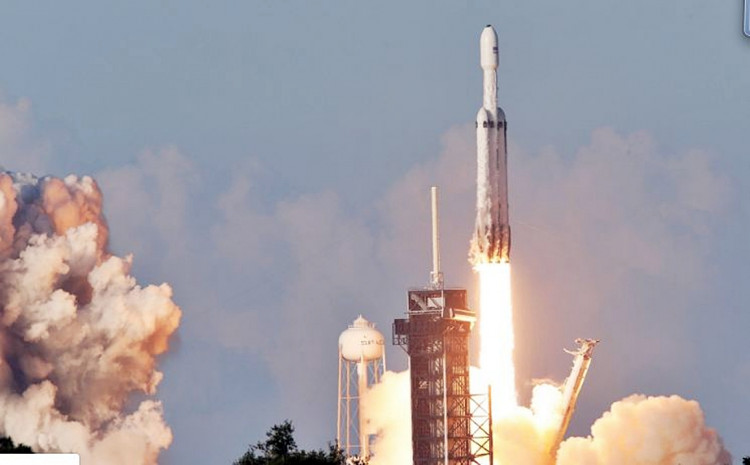SpaceX has connected the three boosters that make up the first stage of its Falcon Heavy rocket in preparation for an approaching launch from NASA's Kennedy Space Center's Pad 39A.
On Twitter, SpaceX shared a photo of the three rockets lined out horizontally, with their combined 27 Merlin engines visible.
Those three boosters are modified first stages of SpaceX's workhorse Falcon 9. The Falcon Heavy connects them and places a payload-carrying second stage on top of the center booster.
At liftoff, those 27 Merlin engines produce almost 5 million pounds of thrust, a record for rockets flying today.
In essence, Falcon Heavy is three Falcon 9 boosters joined together for three times the force. It is now the most potent operational rocket in the world, while being less potent than NASA's Artemis I Space Launch System, which is currently behind schedule, or than the Starship and Super Heavy, which will eventually be more potent.
The current work being done on the Falcon Heavy at Pad 39A is in support of USSF-44, a mission that will send two secret satellites into a far-off geostationary orbit for the US Space Force. Although the launch date has not yet been made official, Oct. 31 has been mentioned in a number of sources.
The Falcon Heavy's first stage, like the Falcon 9's, is meant to be reusable. However, only two of the three rockets on USSF-44 will return to Earth for safe landings; the central core will be discarded and fall into the sea once its launch work is completed.
"There will be two payloads on board this mission -- a larger, unconfirmed satellite and a micro-satellite named TETRA-1," the military said in a statement on one of its YouTube Channels. "TETRA-1 is the first in a series of prototype GEO satellites launched by the US military, which will test systems procedures for future satellites."
The mission was initially scheduled for 2020, but it has been postponed several times due to unannounced payload concerns.
The USSF-44 mission will be the fourth overall and first Falcon Heavy launch since June 2019. One of the most memorable launches in recent memory occurred when it was first used in February 2018 to test a spacesuit-clad mannequin named Starman "driven" Elon Musk's Tesla roadster into orbit around the sun.
The launch occurred only a few miles from Kennedy Space Center's pad 39-A, which is where Apollo 11 launched almost 50 years ago to bring mankind to the moon for the first time.






